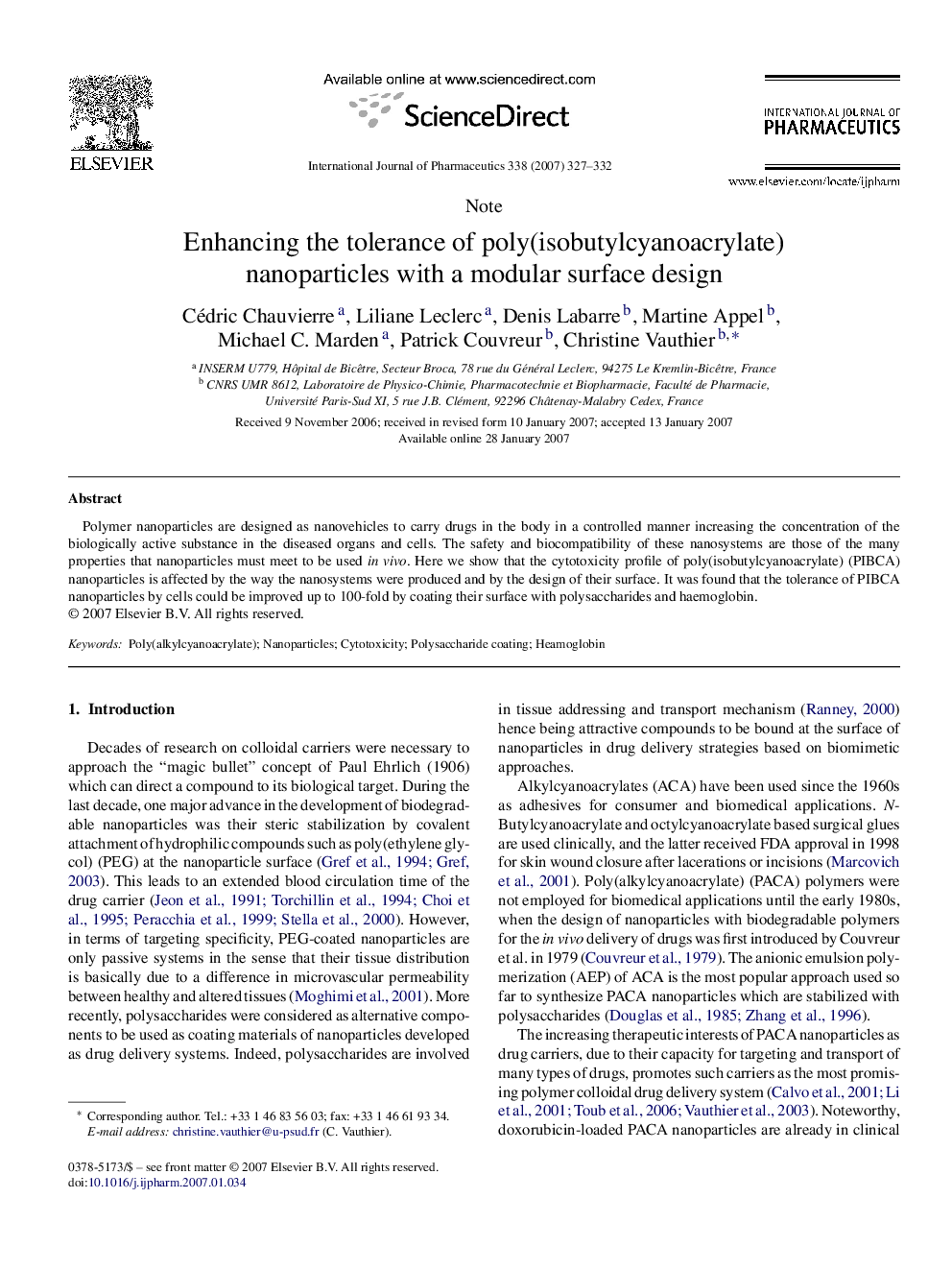| Article ID | Journal | Published Year | Pages | File Type |
|---|---|---|---|---|
| 2506212 | International Journal of Pharmaceutics | 2007 | 6 Pages |
Abstract
Polymer nanoparticles are designed as nanovehicles to carry drugs in the body in a controlled manner increasing the concentration of the biologically active substance in the diseased organs and cells. The safety and biocompatibility of these nanosystems are those of the many properties that nanoparticles must meet to be used in vivo. Here we show that the cytotoxicity profile of poly(isobutylcyanoacrylate) (PIBCA) nanoparticles is affected by the way the nanosystems were produced and by the design of their surface. It was found that the tolerance of PIBCA nanoparticles by cells could be improved up to 100-fold by coating their surface with polysaccharides and haemoglobin.
Related Topics
Health Sciences
Pharmacology, Toxicology and Pharmaceutical Science
Pharmaceutical Science
Authors
Cédric Chauvierre, Liliane Leclerc, Denis Labarre, Martine Appel, Michael C. Marden, Patrick Couvreur, Christine Vauthier,
